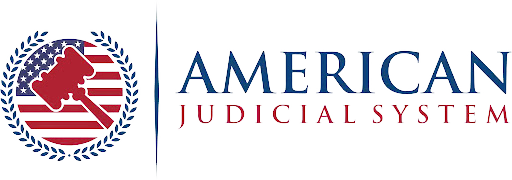In the world of emergency response, automated external defibrillators (AEDs) stand as vital tools for saving lives during sudden cardiac arrests. The precise timing of when to employ an AED is crucial, as it can be the difference between life and death. This article explores the pivotal question: “When should the rescuer operating the AED clear the victim?” Understanding the why, when, and how of clearing the victim is essential for anyone responsible for operating these life-saving devices. Delving into the science, guidelines, and practical considerations, we will shed light on this critical aspect of AED usage, ensuring that rescuers are equipped with the knowledge needed to maximize their chances of survival during cardiac emergencies.
When Should The Rescuer Operating The AED Clear The Victim?
The rescuer operating the AED should clear the victim just before delivering a shock. It is crucial to ensure the victim’s chest is dry and bare, minimize the risk of electrical interference, and clear bystanders from the immediate vicinity. Following established guidelines and AED prompts is essential to safely and effectively clear the victim, increasing the chances of successful defibrillation during a cardiac emergency.
Why Clearing The Victim Is Necessary?
Clearing the victim before using an AED is necessary for several critical reasons. Firstly, understanding the importance of this step requires recognizing the purpose of an AED: to restore a normal heart rhythm during cardiac arrest. When a shock is delivered, the electrical current travels through the victim’s chest to reach the heart. If the chest is not cleared, any impediments like moisture or clothing could disrupt the electrical flow, reducing the effectiveness of the shock.
Secondly, failing to clear the victim may pose risks of electrical interference. Moisture, sweat, or water on the victim’s chest can create a path of least resistance for the electrical current, potentially diverting it away from the heart and rendering the defibrillation less effective. This can result in a failure to achieve the desired outcome of restoring the heart’s normal rhythm.
Moreover, minimizing interruptions in chest compressions and defibrillation is crucial for survival. Clearing the victim ensures that the rescue team can rapidly and safely deliver the shock without unnecessary delays. In cardiac emergencies, every second counts, and any interruptions in CPR can significantly reduce the chances of successful resuscitation.
Lastly, the safety of both the victim and the rescuer is paramount. Clearing the victim of any hazards, including wetness or nearby conductive materials, reduces the risk of unintended injuries to both the victim and the rescuer. It also helps prevent bystanders from getting inadvertently shocked during the rescue process, ensuring the safety of all involved parties.
Factors Influencing The Timing Of AED Use
Several key factors influence the timing of AED use in a cardiac arrest situation:
- Recognition Of Cardiac Arrest: The most critical factor is recognizing when a victim is experiencing cardiac arrest. Quick identification of cardiac arrest and the absence of a pulse or abnormal breathing is essential. Early recognition allows for immediate initiation of CPR and prompt AED deployment, which significantly increases the chances of survival.
- Access To AED: Timing is influenced by the accessibility of an AED. AEDs should ideally be readily available in public places, workplaces, and residential areas to reduce the time it takes for a rescuer to retrieve and use the device.
- Bystander Response: The willingness and readiness of bystanders to respond to a cardiac emergency play a vital role. Bystanders who are trained in CPR and AED use can quickly assess the situation and initiate the rescue process, ensuring minimal delays.
- Emergency Services Response Time: The timing of AED use is also influenced by the response time of emergency medical services (EMS). In some cases, bystanders may have to rely on AEDs until EMS personnel arrive, making early AED use crucial.
- Quality Of CPR: Effective chest compressions and rescue breaths provided during CPR can help maintain circulation and oxygenation while awaiting defibrillation. The quality of CPR can influence the timing of AED use by buying more time for defibrillation attempts.
- Victim’s Condition: The victim’s age, underlying medical conditions, and overall health can affect the timing of AED use. For example, certain medical conditions may make early defibrillation even more critical, while others may require special considerations.
- Rescuer Training: The level of training and confidence of the rescuer in using an AED can influence the timing. Trained individuals are more likely to act promptly and correctly when faced with a cardiac arrest situation.
How To Clear The Victim Safely?
Clearing the victim safely before using an automated external defibrillator (AED) is crucial to ensure the effectiveness of the defibrillation process and minimize risks. Here’s how to clear the victim safely:
Check For Hazards And Wetness:
Before approaching the victim, assess the surroundings for any potential hazards like water, wet surfaces, or conductive materials. Ensure that both the victim and the rescuer are not in contact with water or any conductive substance, as it can increase the risk of electrical shock.
Clear Bystanders:
Instruct bystanders to step away from the victim and maintain a safe distance to avoid contact with the victim or the AED. Clearing bystanders is crucial to prevent them from being inadvertently shocked during the rescue process.
Prepare The Victim:
Ensure the victim is lying on a dry, firm surface, preferably on the ground. If the victim is on a bed or cushioned surface, move them to a safe, flat area before using the AED.
Expose The Victim’s Chest:
To allow proper AED pad placement and ensure good skin contact, expose the victim’s chest. Remove or cut through clothing, if necessary, to have direct access to the chest.
Dry The Chest If Wet:
If the victim’s chest is wet due to sweat, water, or any other reason, gently dry it using a clean cloth or your hand. Dry skin provides better conductivity and ensures the AED electrodes adhere properly.
Apply AED Electrode Pads:
Attach the AED electrode pads to the victim’s bare chest as per the AED’s instructions. Ensure that the pads are placed correctly, typically with one pad on the upper right chest and the other on the lower left side of the chest.
Ensure Everyone Is Clear:
Announce loudly, “Clear, everyone stands clear!” to ensure that no one is in contact with the victim or the surrounding area. Confirm that all individuals have moved away from the victim before proceeding.
Follow AED Prompts:
Activate the AED and follow the voice and visual prompts provided by the device. The AED will analyze the victim’s heart rhythm and instruct you on whether or not to deliver a shock.
Administer The Shock If Advised:
If the AED advises a shock, make sure no one is in contact with the victim, and press the shock button as instructed. Allow the AED to deliver the shock, and then resume CPR immediately as directed by the AED.
Continue Monitoring:
After the shock is delivered, continue to follow the AED’s prompts for further actions, including additional shocks or CPR cycles.
Conclusion
In conclusion, understanding when and how to clear the victim before using an automated external defibrillator (AED) is pivotal in the timely response to cardiac emergencies. Clearing the victim ensures both the victim’s and the rescuer’s safety while also minimizing interruptions in the defibrillation process. By following established protocols, recognizing cardiac arrest promptly, and ensuring a safe environment, rescuers can optimize the chances of a successful outcome. As AEDs continue to play a crucial role in saving lives, proper training and adherence to guidelines remain essential for effective emergency response.
FAQ’s
Can I Use An AED If I’m Not Trained In CPR?
Yes, AEDs are designed for use by untrained individuals. They provide clear voice and visual instructions to guide users through the process.
Do I Need To Clear The Victim Before Using An AED At Home?
Yes, it’s important to clear the victim to ensure the AED functions effectively and safely. Follow the AED’s instructions for proper clearing.
Is It Safe To Use An Aed On A Wet Surface Or In The Rain?
No, it’s essential to keep the AED and the victim’s chest dry to prevent electrical shock. Move to a dry area if possible.
Can An Aed Harm The Victim If Used Incorrectly?
AEDs are designed to minimize the risk of harm. They analyze the heart rhythm and only deliver a shock if necessary. Follow instructions carefully to ensure safety.
Are Aeds Only For Adults?
No, AEDs can be used on both adults and children, but there are specific pediatric electrode pads and settings for children under 8 years old or weighing less than 55 pounds.










